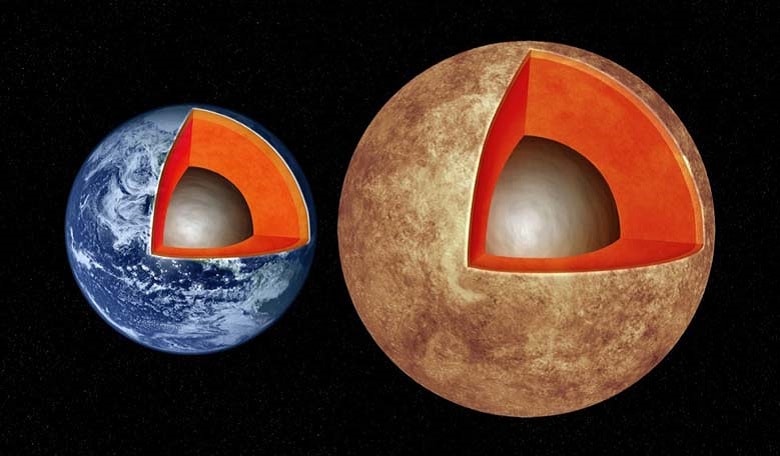We know from the architecture of our Solar System that all planets are not built equally, but is it safe to assume that Earth-like worlds in other systems are clones of our own rocky planet? In the first steps to deriving the compositional diversity of small rocky planets, models recently constructed by researchers from the Harvard-Smithsonian Centre for Astrophysics (CfA), suggest that the answer is apparently yes.
Using a computer model known as the Preliminary Reference Earth Model (PREM), which is the standard model for Earth's interior, lead author Li Zeng and team adapted the model’s parameters to analyse different compositions and masses and applied it to six known rocky exoplanets with wellmeasured masses and physical sizes. "We wanted to see how Earth-like these rocky planets are. It turns out they are very Earth-like," says Zeng.
Small planets are abundant in the galaxy, but the compositional diversity of these planets is not well understood as a thorough investigation of planet densities is hindered by the lack of small planets with well-measured masses and radii. Not only that, but theoretical models of planet formation predict that planets intermediate in size between Earth and Neptune could be gaseous ‘mini- Neptunes,’ rocky ‘Super-Earths,’ or indeed water worlds, thus adding to the uncertainty in planet structures.
After analysis of their results Zeng and team found that despite their differences from Earth, the other planets should all have a nickel/iron core containing about 30 percent of the planet's mass. This correlates well with our own rocky-world as about a third of the Earth's mass is in its core. The remainder of each planet would be mantle and crust, just as with Earth. "We've only understood the Earth's structure for the past hundred years. Now we can calculate the structures of planets orbiting other stars, even though we can't visit them," adds Zeng.
The work by Zeng and team builds upon recent research published last year, whereby scientists constrained the mass for Kepler-93b, a planet that orbits around its host star in just under 5 days. By calculating its mass – approximately four Earth masses – Kepler-93b is now added to the list of a dozen or so small exoplanets with radii and masses measured to better than ?30% precision.
Research by this team, led by Courtney Dressing, also concluded that all dense planets including Earth and Venus are well-described by the same fixed ratio of iron to magnesium silicate and that rocky planets very close to their host stars seem to obey a well-defined relationship between radius and mass, based on the small sub-set of planets studied so far. Conversely, Dressing and team also found that planets larger than approximately six Earth masses contain significant fractions of volatiles or hydrogen/helium gas and that these planets appear to have a diversity of compositions that is not well-explained by a single mass-radius relation.
The new code used by Zeng and team can also be applied to smaller, icier worlds like the dwarf planets and moons in the outer solar system and has been utilised already to study Pluto’s composition. Zheng and team find that by plugging in Pluto’s size and mass, its composition is about one-third ice (mostly water ice but also ammonia and methane ices). The next step will to be determine if the extra-solar system these planets are detected in have similar chemical abundances to our own solar system as planets forming in regions that are considered metal poor or rich could show different interior structures. The team expects to explore these questions in future research.











